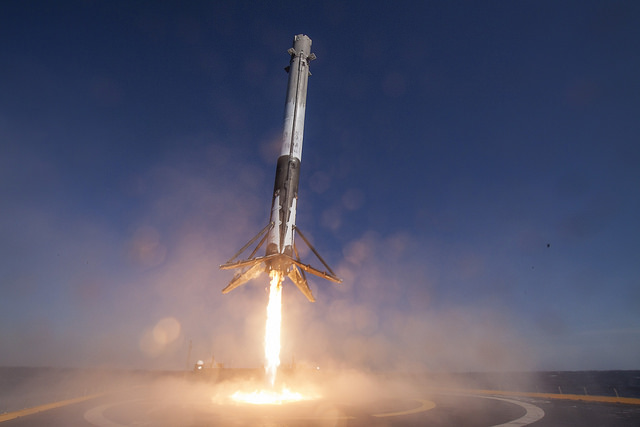SpaceX Aims to Re-Launch Landed Rocket This Fall

SpaceX appears poised to notch another big reusable-rocket milestone.
The California-based company has successfully landed the first stage of its Falcon 9 rocket during orbital launches four times in the past seven months. SpaceX eventually wants to re-fly such boosters, as a way to reduce the cost of spaceflight and further open the heavens to exploration.
"Eventually," it turns out, could be just a few months away. [Reusable Rocket Launch Systems: How They Work (Infographic)]
"On the reflight of the recovered booster, that's going to be most likely in fall this year," Hans Koenigsmann, vice president of flight reliability at SpaceX, said during a news conference Saturday (July 16) that previewed the Monday (July 18) launch of the company's robotic Dragon cargo capsule toward the International Space Station (ISS).
"Of course, we need to have a customer," Koenigsmann added. "We're in talks right now, but we haven't finalized those talks at this point in time."
But SpaceX has decided which rocket will be the first to lift off for the second time, Koenigsmann said. It's the booster that launched the previous Dragon cargo mission to the ISS, on April 8, and then came back down for a soft landing on a robotic "drone ship" in the Atlantic Ocean.
"We are prepping the booster again," Koenigsmann said. "Well, first of all, we have to wash them, right? They come back slightly blackened. And you have to go through a series of tests with the hardware on the booster itself, to make sure everything's working."
Breaking space news, the latest updates on rocket launches, skywatching events and more!
SpaceX's first successful landing came this past December, during a commercial satellite launch from Cape Canaveral Air Force Station in Florida. That Falcon 9 first stage came back on terra firma, touching down a few miles south of the launch pad.
The next three landings — the April 8 success, as well as two more in May — came on the drone ship. The Falcon 9 often cannot carry enough fuel to make it all the way back to dry land during launches to geostationary transfer orbit (which lies 22,300 miles, or 35,890 kilometers, from Earth) and other distant destinations, SpaceX representatives have said.
Monday morning's Dragon launch — which is scheduled to take place at 12:45 a.m. EDT (0445 GMT) from Cape Canaveral — will also feature a landing attempt. Like SpaceX's first touchdown success, this try will come on terra firma, at Cape Canaveral's Landing Zone 1, Koenigsmann said.
You can watch Monday's launch and landing attempt live here at Space.com, courtesy of NASA TV.
Follow Mike Wall on Twitter @michaeldwall and Google+. Follow us @Spacedotcom, Facebook or Google+. Originally published on Space.com.

Michael Wall is a Senior Space Writer with Space.com and joined the team in 2010. He primarily covers exoplanets, spaceflight and military space, but has been known to dabble in the space art beat. His book about the search for alien life, "Out There," was published on Nov. 13, 2018. Before becoming a science writer, Michael worked as a herpetologist and wildlife biologist. He has a Ph.D. in evolutionary biology from the University of Sydney, Australia, a bachelor's degree from the University of Arizona, and a graduate certificate in science writing from the University of California, Santa Cruz. To find out what his latest project is, you can follow Michael on Twitter.
